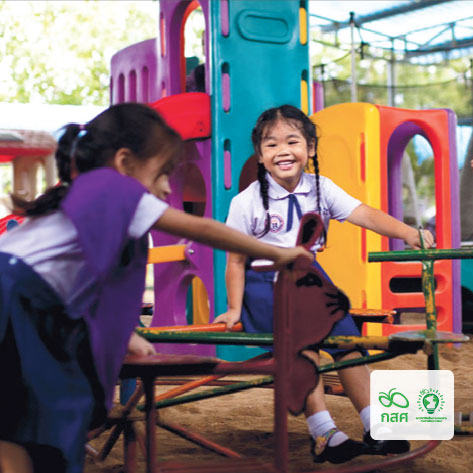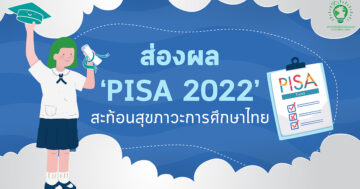Reducing Inequality through Early Childhood Education
The project to reduce inequality through the quality early childhood education
The RIECE Curriculum in Thailand under the Reducing Inequality Through Early Childhood Education (RIECE) project was developed from the HighScope curriculum in the United States of America, which is very successful through teaching that emphasizes learning with ‘play’ that promotes skills of the plan-do-review model.
This course is designed to develop Thai children from birth to 6 years. The ‘play’ that will give children the opportunity to play freely. Children therefore learn from direct experience, creating thoughts, knowledge, understanding, and know how to solve problems by themselves.

The RIECE Curriculum in Thailand (The Reducing Inequality through Early Childhood Education program: RIECE Thailand) was built on the findings of Professor James J. Heckman from the University of Chicago for use in the project to reduce inequality through the quality early childhood education. Heckman’s findings showed that the benefit-to-cost ratio from the HighScope curriculum in the ‘Perry Preschool’ project was approximately 7: 1 to 12: 1, meaning that a 1 baht investment in benefits was returned to the participants and society in this project as a whole, approximately 7 to 12 baht.

From ‘Perry Preschool’ to ‘Early Childhood in Thailand’?
When ‘Perry Preschool’ was adapted to the Thai context, Thai researchers have encouraged more than 50 child development centers in Maha Sarakham and Kalasin provinces to use this program since 2015, called the RIECE Curriculum in Thailand. The first year of operation placed particular emphasis on the Plan-Do-Review (PDR) process.
One interesting finding was
The early childhood study under the RIECE Curriculum in Thailand were 16% more likely to pass the criteria than another group of children. Overall, the results mentioned above indicated in the same direction that the RIECE Curriculum in Thailand can promote a child’s development better than other programs that were used in the research area.
Moreover, in the same research, the researchers also answered the question, “How did the RIECE Curriculum in Thailand affect the different Groups of children?”, with special emphasis on the factors that both parents do not live in the household because a variety of Thai early childhood do not live with their parents.
In the research ‘Do Parental Absence and Children’s Gender Affect Early Childhood Investment? Evidence from Rural Thailand’, the authors Ngoc Tu T. Đinh and Weerachart Kilenthong found that more than 45 percent of Thai early childhood did not live with their parents in rural areas of Thailand. The RIECE Curriculum project in Thailand was better to support the development of children who did not live with their parents than another group of children. Furthermore, the early childhood who did not live with their parents were more likely to lack opportunities.
The early childhood’s readiness and the needy families
At the same time, the researchers, from the Research Institute for Policy Assessment and Design (RIPED), University of the Thai Chamber of Commerce, collected the data of early childhood’s readiness in every region of the country under the School Readiness Project for the early childhood education system (School Readiness), which preliminary analysis indicated that the readiness of Thai early childhood in some issues was still relatively low, such as the number identification, the mental transformation which was a mathematical skill, listening comprehension which was a language skill, working memory which was the EF skills, and fine motor, which was considered a concern for this research.
But considering the availability of food, it is found that almost all young children (More than 97 percent) had eaten breakfast and most parents believed that their children had eaten all five food groups. Both these findings confirmed that in terms of nutrition, especially, eating breakfast was not a significant problem for the Thai early childhood. However, the issue that was of greater concern was the family poverty, which was measured here by the frequency of the family having problems with insufficient food for consumption. The results of the data analysis showed that there were many families who have experienced food problems in a week. In addition, when comparing the test results of the early childhood in listening comprehension, the number identification and the mental transformation (it was a mathematical skill) between the children from families who have had insufficient food for consumption and children from families that have never had problems, it was found that the readiness of the early childhood from families who have had such problems was clearly lower than another group.


Credit :
Heckman, J. J., Moon, S. H., Pinto, R., Savelyev, P. A., and Yavitz, A. (2010). The Rate of Return to the HighScope Perry Preschool Program. Journal of Public Economics, 94(1-2):114-128.
Chujan, W. and Kilenthong, W. T. (2019). An Early Evaluation of a HighScope-Based Curriculum Intervention in Rural Thailand.












